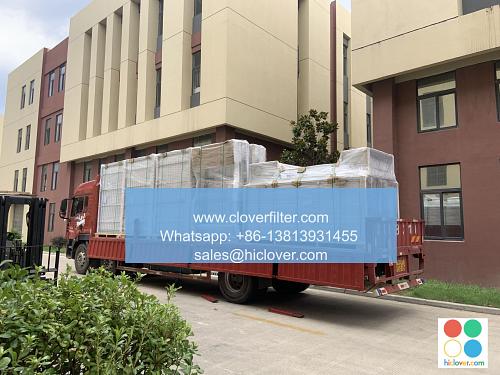The Science Behind Roll Air Filters: How They Trap Particles and Improve Airflow

The Science Behind Roll Air Filters: How They Trap Particles and Improve Airflow
Introduction
Roll air filters have become a crucial component in various industries, from HVAC systems to medical equipment, as they play a vital role in trapping particles and improving airflow. But have you ever wondered how these simple-looking air filters actually work their magic? This article will delve into the science behind roll air filters, exploring how they capture particles, and the benefits they bring to air quality and flow.
How Roll Air Filters Work
Roll air filters are designed to capture airborne particles, including dust, pollen, and other airborne contaminants. They consist of a pleated paper or synthetic medium, wrapped around a cylindrical core. As air passes through the filter, particles are caught in the pleats, allowing clean air to continue to flow through.
The Mechanisms of Particle Capture
Particle capture is the result of a combination of three primary mechanisms:
- Inertial Impaction: As air flows through the filter, particles collide with the pleats, which creates an inertial force that impacts and traps them.
- Diffusion: Smaller particles, such as dust and pollen, are deposited on the surface of the filter through a process called diffusion, where they are attracted to the filter’s surface.
- Interception: Larger particles, like hair and fibers, are caught in the pleats, where they become lodged and remain, preventing them from passing through the filter.
Characteristics Affecting Particle Capture
The following factors influence a roll air filter’s ability to capture particles:
- Fiber Size and Orientation: Wider, more irregular fibers with sharp edges and tips are more effective at capturing smaller particles.
- Filter Thickness and Density: Thicker filters with higher density are better at capturing smaller particles, while thinner filters focus on larger particles.
- Surface Area: Increasing the surface area of the filter allows it to capture more particles, making it more effective.
Benefits of Roll Air Filters
By capturing airborne particles, roll air filters significantly improve air quality and reduce the risk of health issues. Some of the benefits include:
- Improved Indoor Air Quality: By removing pollutants and contaminants, roll air filters help create a healthier indoor environment.
- Reduced Allergies and Asthma: By decreasing exposure to airborne allergens, roll air filters alleviate symptoms for those with allergies and asthma.
- Increased Equipment Lifespan: By reducing the amount of contaminants entering equipment, roll air filters prolong their lifespan and performance.
- Energy Efficiency: By optimizing airflow, roll air filters enable HVAC systems to operate more efficiently, reducing energy consumption and costs.
Conclusion
Roll air filters have come a long way in providing a simple yet effective means of capturing particles and improving airflow. Understanding the science behind these filters has led to their widespread adoption in various industries. By recognizing the importance of initial placement, filter selection, and maintenance, individuals can reap the many benefits roll air filters offer, ensuring a healthier, more efficient, and more comfortable indoor environment.

